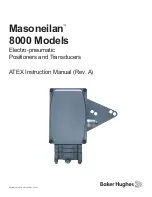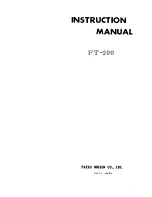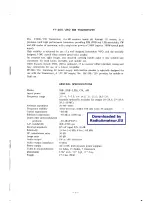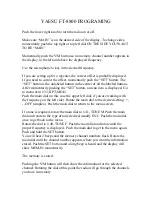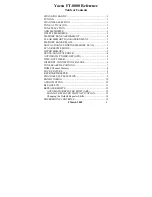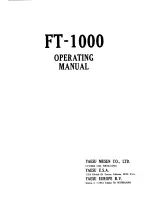
SWRS037B – JANUARY 2006 – REVISED MARCH 2015
The MCU must control start and stop of transmit with the STX and SIDLE strobes.
The CC1150 modulator samples the level of the asynchronous input 8 times faster than the programmed
data rate. The timing requirement for the asynchronous stream is that the error in the bit period must be
less than one eighth of the programmed data rate.
5.18.2 Synchronous Serial Operation
Setting PKTCTRL0.PKT_FORMAT to 1 enables synchronous serial operation mode. In this operational
mode the data must be NRZ encoded (MDMCFG2.MANCHESTER_EN=0). In synchronous serial
operation mode, data is transferred on a two wire serial interface. The CC1150 provides a clock that is
used to set up new data on the data input line. Data input (TX data) is the GDO0 pin. This pin will
automatically be configured as an input when TX is active. The TX latency is 8 bits.
Preamble and sync word insertion may or may not be active, dependent on the sync mode set by the
MDMCFG3.SYNC_MODE.
If preamble and sync word is disabled, all other packet handler features and FEC should also be disabled.
The MCU must then handle preamble and sync word insertion in software.
If preamble and sync word insertion is left on, all packet handling features and FEC can be used. When
using the packet handling features synchronous serial mode, the CC1150 will insert the preamble and
sync word and the MCU will only provide the data payload. This is equivalent to the recommended FIFO
operation mode.
5.19 System Considerations and Guidelines
5.19.1 SRD Regulations
International regulations and national laws regulate the use of radio receivers and transmitters. Short
Range Devices (SRDs) for license free operation below 1 GHz are usually operated in the 315-MHz, 433-
MHz, 868-MHz or 915-MHz frequency bands. The CC1150 is specifically designed for such use with its
300 to 348 MHz, 400 to 464 MHz and 800 to 928 MHz operating ranges. The most important regulations
when using the CC1150 in the 315-MHz, 433-MHz, 868-MHz or 915-MHz frequency bands are EN 300
220 (Europe) and FCC CFR47 part 15 (USA). A summary of the most important aspects of these
regulations can be found in
AN001 SRD Regulations for Licence Free Transceiver Operation
(
NOTE
Compliance with regulations is dependent on complete system performance. It is the end-
product manufactor’s responsibility to ensure that the system complies with regulations.
5.19.2 Frequency Hopping and Multi-Channel Systems
The 315-MHz, 433-MHz, 868-MHz or 915-MHz bands are shared by many systems both in industrial,
office and home environments. It is therefore recommended to use frequency hopping spread spectrum
(FHSS) or a multi-channel protocol because the frequency diversity makes the system more robust with
respect to interference from other systems operating in the same frequency band. FHSS also combats
multipath fading.
CC1150 is highly suited for FHSS or multi-channel systems due to its agile frequency synthesizer and
effective communication interface. Using the packet handling support and data buffering is also beneficial
in such systems as these features will significantly offload the host controller.
Charge pump current, VCO current and VCO capacitance array calibration data is required for each
frequency when implementing frequency hopping for CC1150. There are 3 ways of obtaining the
calibration data from the chip:
1. Frequency hopping with calibration for each hop. The PLL calibration time is approximately 720 µs.
The blanking interval between each frequency hop is then approximately 810 µs.
36
Detailed Description
Copyright © 2006–2015, Texas Instruments Incorporated
Product Folder Links:
Summary of Contents for CC1150
Page 61: ...PACKAGE OPTION ADDENDUM www ti com 30 May 2018 Addendum Page 2 ...
Page 64: ......
Page 65: ......

































